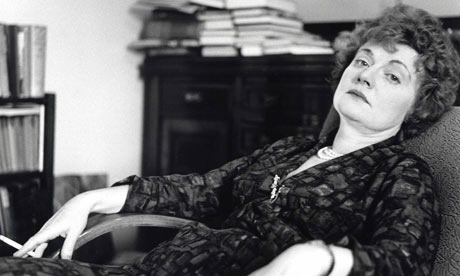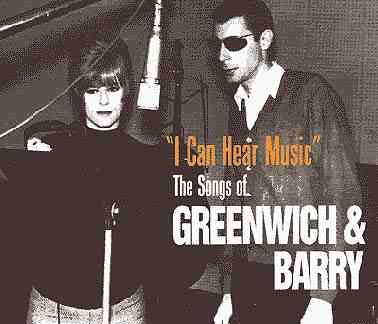
What if you went on a wild-goose chase and the goose turned out to be God?
Underneath the Lintel is a play of nervous laughter — of the playwright, Glen Berger, who composed this spiritual quest of a philosophical comedy, this vaudeville routine for harried clown filled with mysteries and angst; of the solo actor performing it; of those of us in the audience, out in the dark, who wonder about what our lives might mean, or if they mean anything at all. (We’re willing to laugh at ourselves, the possibility of our insignificance, but not much. Not so very much.)
During Reed McColm’s one-man rendition — amusing, flawed, halting, eventually moving — a lot of people will find themselves laughing nervously.
Reference librarians, world travelers, vaudeville comedians, Jews and mystery lovers will all find themselves reflected in Berger’s play. Also anybody who has ever looked up at the nighttime sky and wondered what the hell we’re doing here, and what it all means.
McColm’s Dutch librarian appears to us at first from out of the shadows, emerging from behind the blackboard nervously, clutching his suitcase of “evidences,” halting and too deferential. Will he be soft-voiced and anxious all night? We could be in for a long two hours.
Right away, there are references to death and transience, erasure, the insignificance of our lives. There’s the nervous laughter. This is a comedy?
In the overnight bin, the Librarian has found a book that’s 113 years overdue. (Much smacking of the forehead.) Inside are clues that lead him successively to a village in China, to a
shtetl in Poland, to a dry cleaner’s in London. It becomes an obsessive historical quest that Berger’s script manages to make, in succession, ridiculous, unlikely, questionable, probable, profound.
There’s much that’s delightful in McColm’s performance — the librarian’s love of trivia; the funny little skips and jigs; the way he breaks down the fourth wall and our expectations; the way how, when the prospect of an international journey opens up, his face brightens with anticipation. But there is also much that could be improved.
McColm’s overdone initial nervousness makes us nervous; so do Berger’s references to death and decay. More energy and eccentricity from the outset would be reassuring: “We may be stuck with this odd Librarian fellow,” viewers might think, “but at least his tics and strange perspectives might make the time pass agreeably.”
On opening night, McColm experienced multiple writing-implement failures — his chalk kept cracking and flying away from the chalkboard — and the way he improvised his way around that and into comedy was instructive. “American chalk,” he deadpanned; later, he explained verbally what he was supposed to have drawn (before the chalk broke). The audience recognized the spontaneity and laughed all the harder.
The contrast, unfortunately, was with some of McColm’s more obviously contrived and halting moments.
He’s too nervous at the outset. Sometimes he’s reaching for his lines. There’s much fussing and dithering — with an eccentric European nerd, we expect as much — but there are also limits. In several instances, the grasping for cues during jokes led to pauses that overextended or undermined the punch lines. There was some misnumbering of evidence items and some miscalculating of dates — forgivable, but they popped us right out of the play.
And there were two larger flaws: an accent of indeterminate origin that went away for long stretches and then returned, unannounced, along with a noticeable first-act lack of energy.
Midway through Act One, our Librarian friend finds himself poring over the account books for an English estate sometime in the early 18th century — something to do with a fox hunt, don’t inquire too much — and McColm delivers an entertaining playlet between a proper British twit and a grotesque intruder. Problem was, when it was time to revert to the Dutchman’s (Russian? East European?) accent, it was nowhere to be found, and for several minutes. Then it showed up again.
And then the pace lagged: too many pauses and umm’s, too much loss of momentum. The Librarian is feverish: the hall’s rented for tonight, and he has this fantastic story to tell, and he’s taken a huge chance (his “daring gambit,” he calls it) by leaving work and going to places that this stay-at-home bookish fellow never thought he would go, and he’s onto his huge philosophical mystery…. There needs to be frenzied, commanding mania, nearly from the outset. But director Damon Abdallah and McColm have chosen too tentative a path for the opening. Berger’s little rest stops (the Librarian’s recollections of lost love, the petty grievances with co-workers, the wonders presented by exotic cultures) allow the respites we need (in case they’re worried about being too intense from the beginning and then having nowhere to go).
So the performance lacks a sense of increasing mania. But it also has its delights: McColm’s self-satisfied little shake of the head (for when the Librarian has unearthed a tidbit of knowledge); the glasses on the end of the nose; the index finger held up for attention; the crucial, tagged piece of evidence held triumphantly aloft. He plays to our guilt: Audiences love the I’ve-been-naughty-you-caught-me tone in accounts of what librarians feel and say when some unthinking patron violates the library’s rules.
And there was evidence of another kind — that McColm had entranced his audience — when the big reveal was made (the identity of the character whom the Librarian has been hunting down) and you could (apologies for the cliché) hear a pin drop; he had them in the palm of his hand. Soon after, a re-enactment of a biblical episode, and again the watchful quiet.
The first act ends with a characteristic joke. The Librarian — the homebody, the man of routine, is going to risk all and gallivant off to China in search of clues. “The land of rice!” he exclaims. He can’t believe these things he’s planning and places he’ll go — “… me, who had Hunan chicken once … and got the runs for a week.”
My recurring thought — “this’ll get better as the run goes on” — was borne out within the opening-night performance itself: The second act, as compared with the first, feels more accomplished, frenetic, funny, profound and moving.
Even then there are the unnerving references to death and destruction (a flood in China, the vastness of the universe). We’re indifferent to the fate of people we don’t know, the Librarian explains: “Unless you knew him, it’s all just behind the couch,” he says. Millions die halfway around the world, and we turn to another section of the newspaper.
McColm is especially good at comic deflation — those moments when he arouses anticipation, then lets it fall flat. (“And do you know what I found? … nothing.”)
There are some second-act passages about regret over lost love and raging against the injustice of fate (of having to live in a world ruled over by a God who allows our lives to be fated) … that seem unprepared for.
But by and large, Act Two is funnier. The merger of the Librarian and the audience and the fugitive whom he’s searching for seems clearer; and McColm makes his bookish fellow more obsessed, more despairing and more defiant — all of which ratchets up the performance’s energy level and interest.
We are all, each one of us, the legendary, mythical biblical character whom the Librarian pursues so obsessively. We’re none of us content with all the frantic running around that we find ourselves doing on the surface of this rock that’s hurtling around an insignificant star. Both funny and sad, Berger’s play taps into the mixed existential mood — just as Charlie Chaplin and Samuel Beckett did, just as McColm will once his act finds its groove.
Final notes:
Painting: by Marc Chagall
Underneath the Lintel runs at Interplayers through Dec. 12. Visit interplayers.com.
Jim McCurdy should not butt into curtain speeches and double their length with rambling sales pitches.
I counted 80 in attendance on opening night (in a theater that holds 250). Some playgoers left at intermission. Too bad, because they missed the better of the two acts and the resolution of the mystery. (McColm pauses early in the show, peers out, asks, “Is this all there is?” — and the moment is, for now, too self-reflexive for comfort.) Here’s hoping for bigger houses….
For a video preview of
Underneath the Lintel, visit either inlander.com (under “Arts and Culture”) or youtube.com/theinlander.
Labels: Damon Abdallah, Glen Berger, Interplayers Professional Theatre, Reed McColm, Underneath the Lintel








































